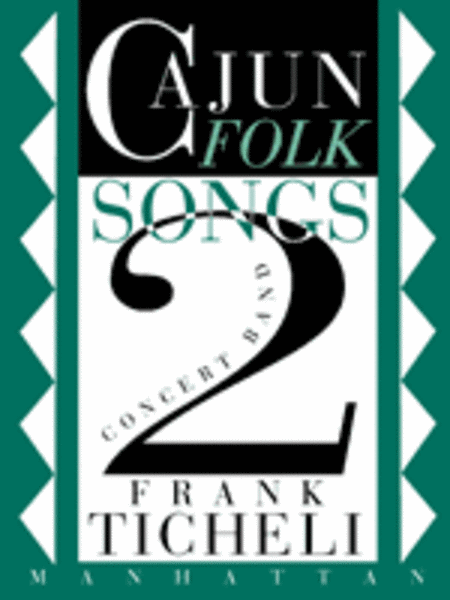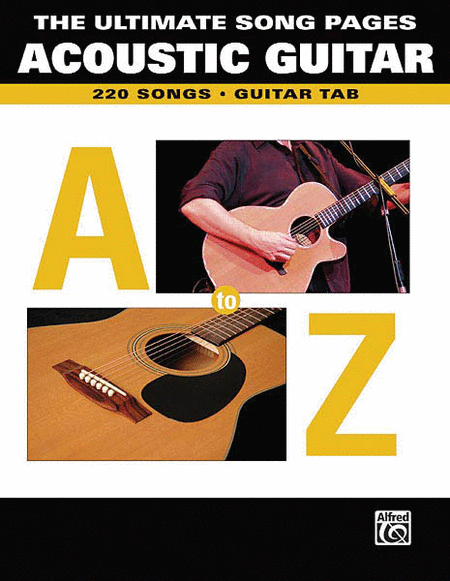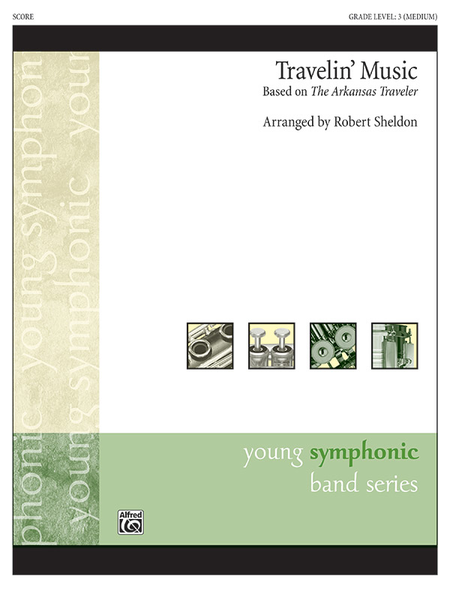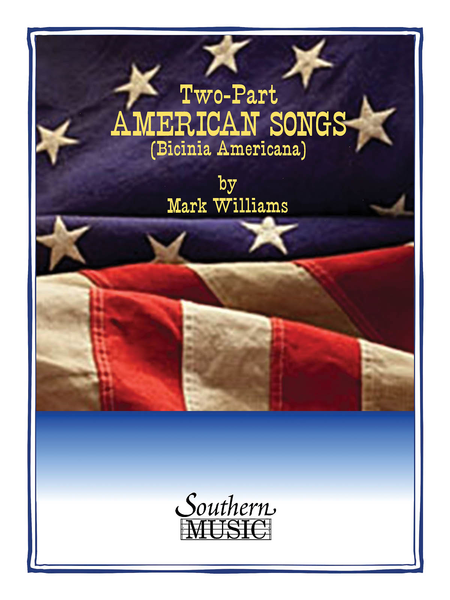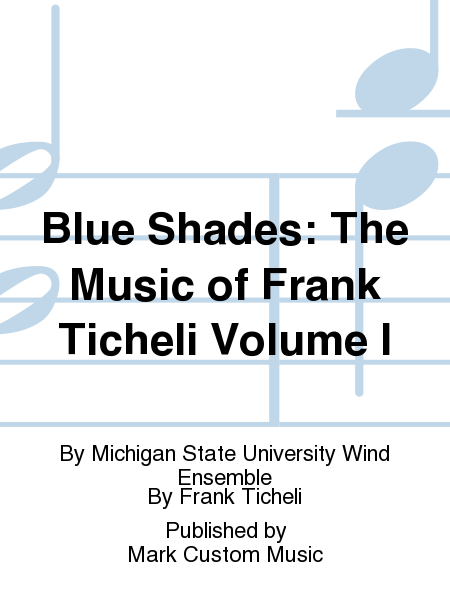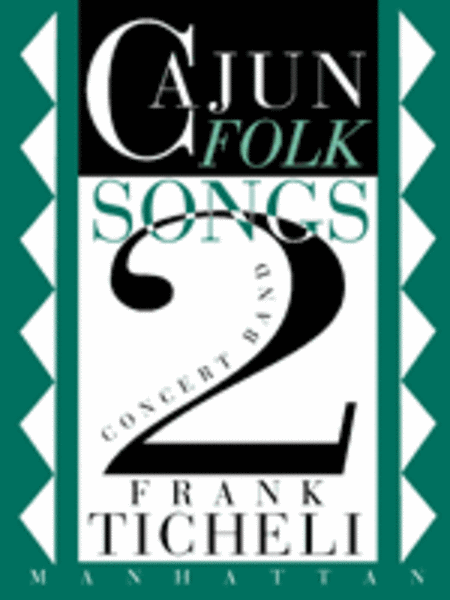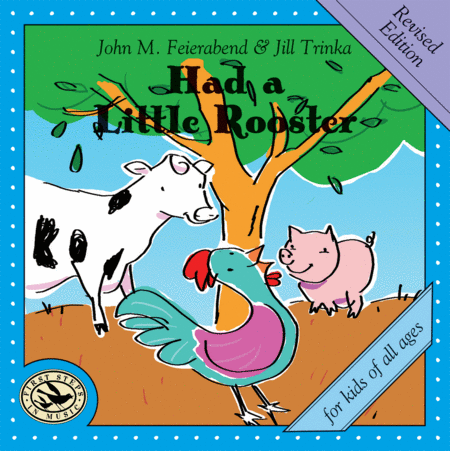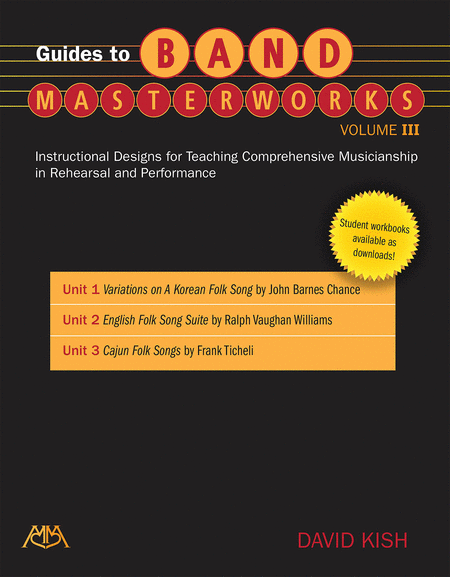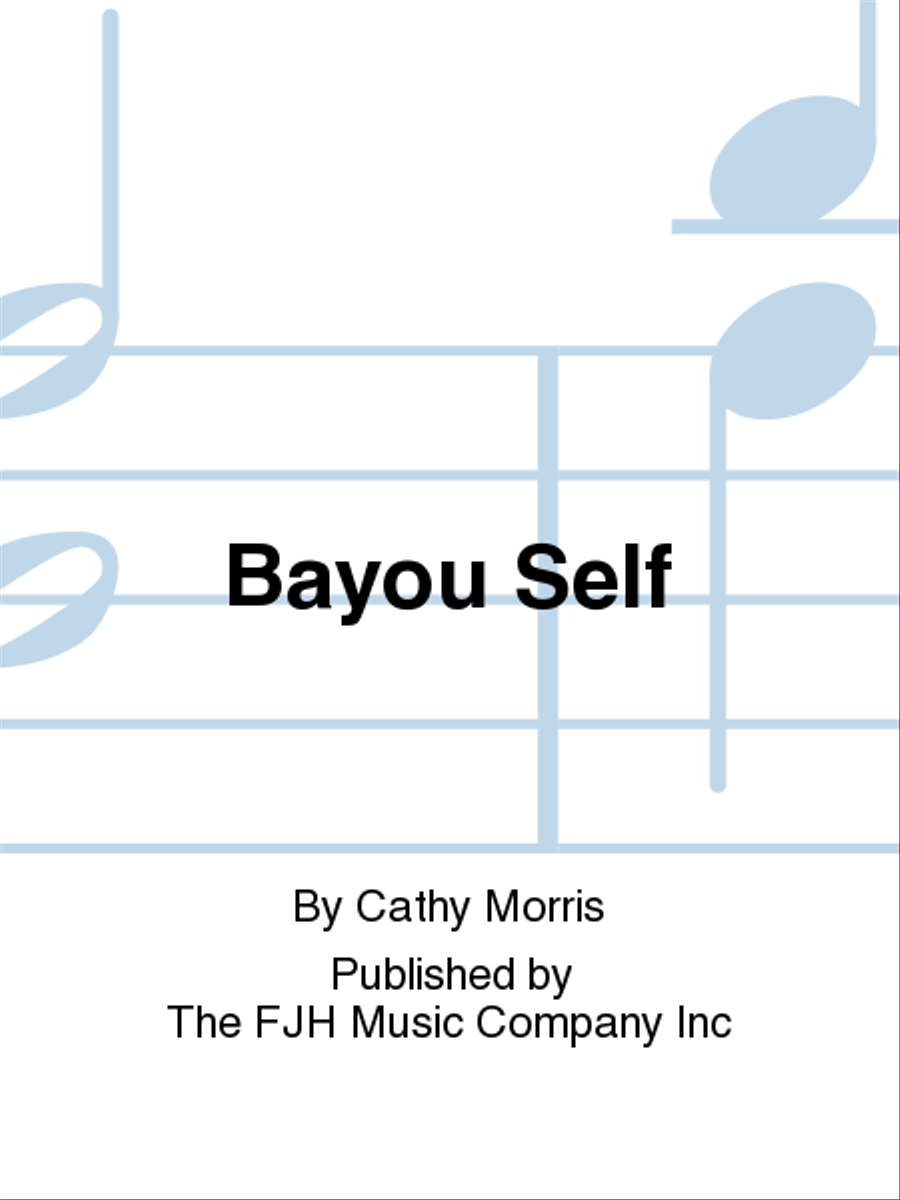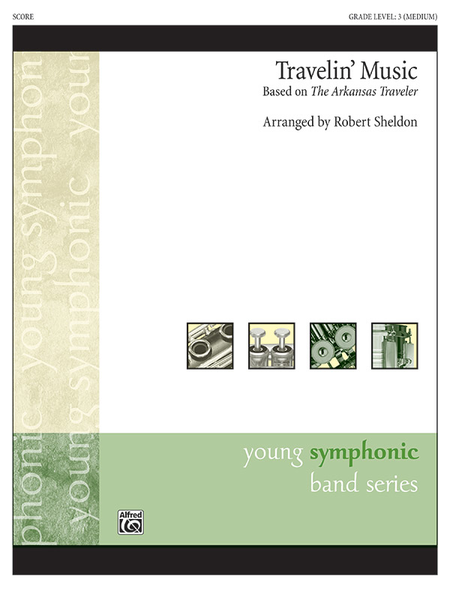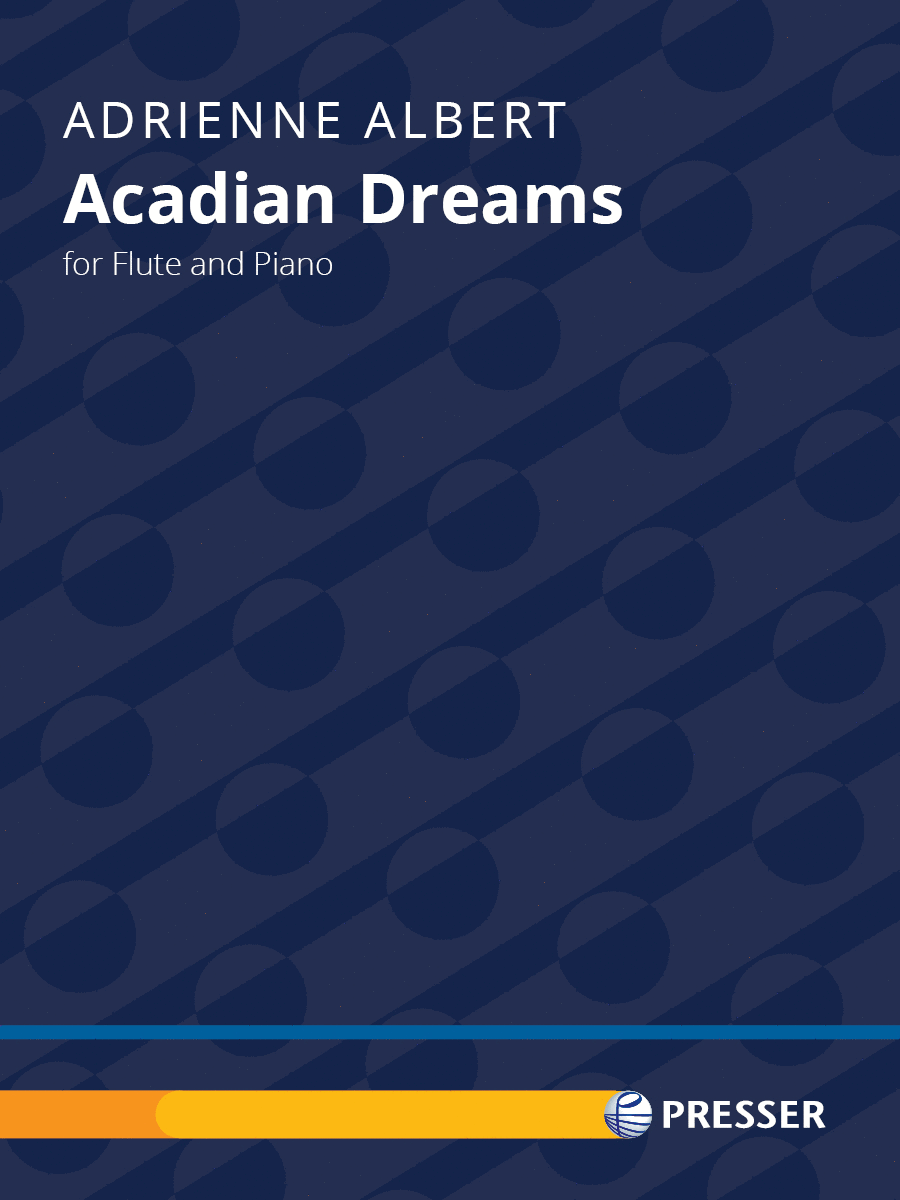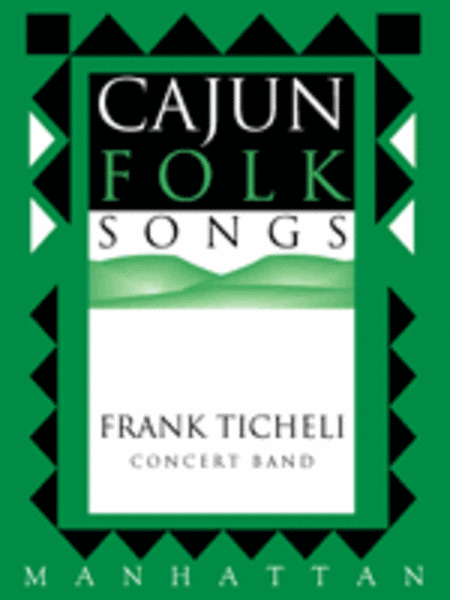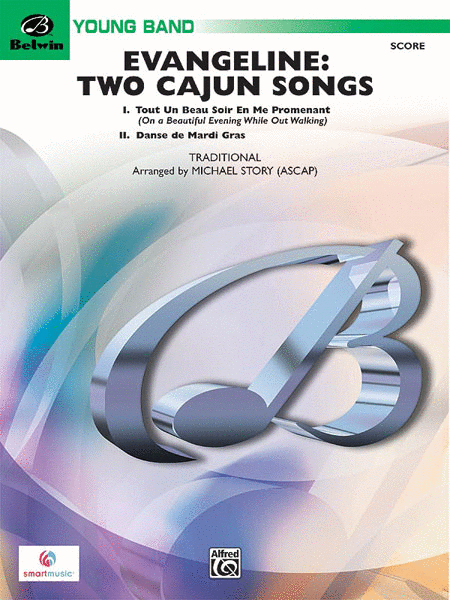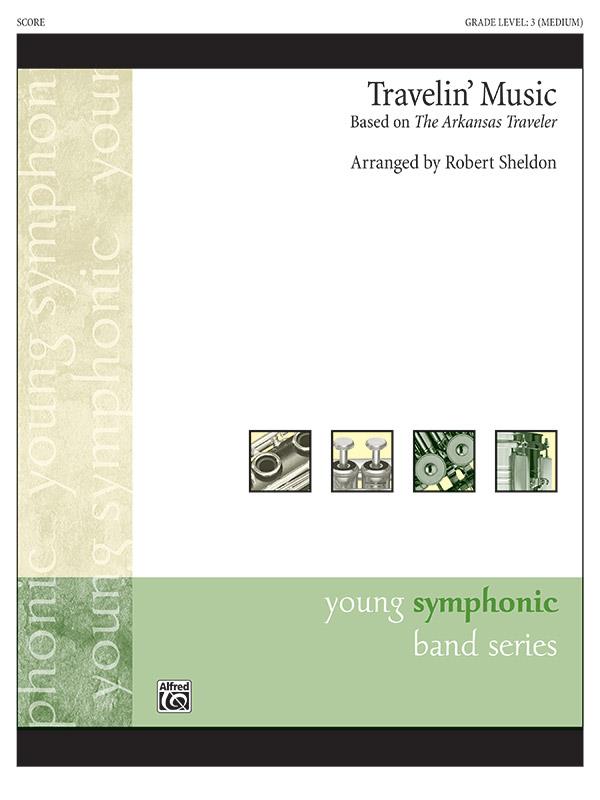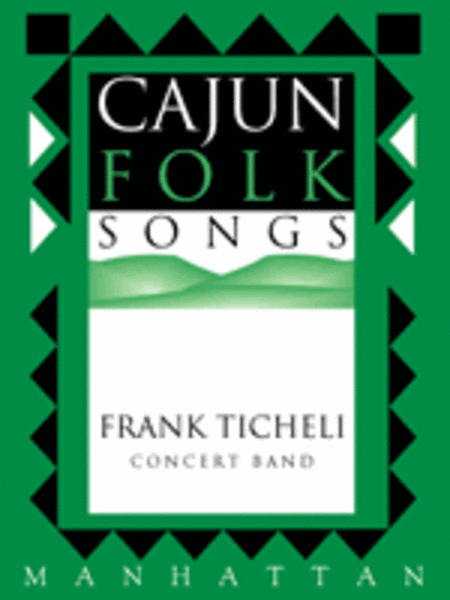 | By Frank Ticheli. Concert band. Suitable for advanced middle school, high school, community and college bands. Level: Grade 3. Conductor Full Score. Duration 6:40. Published by Manhattan Beach Music. Arr : Concert bandPublisher : Manhattan Beach Music $30.00 - See more - Buy online $30.00 - See more - Buy online
Listen audio 
ISBN 0-931329-32-9.
Cajuns are descendants of the Acadians, a group of early French colonists who began settling in Acadia (now Nova Scotia) around 1604. In 1755 they were driven out by the British, eventually resettling in southern Louisiana. Today there are nearly a million French-speaking descendants of the Acadians living in Louisiana and parts of Texas, preserving many of the customs, traditions, stories, and songs of their ancestors. Although a rich Cajun folksong tradition exists, the music has become increasingly commercialized and Americanized throughout the twentieth century, obscuring its original simplicity and directness. In response to this trend, Alan and John Lomax traveled to southern Louisiana in 1934 to collect and record numerous Cajun folksongs in the field for the Archive of Folk Music in the Library of Congress. By doing so, they helped to preserve Cajun music in its original form as a pure and powerful expression of Louisiana French Society. "La Belle et le Capitaine" and "Belle" can both be heard in their original versions on the Lomax recordings (Swallow LP-8003-2, Swallow Records Co., Ville Platte, Louisiana). "La Belle et le Capitaine" tells the story of a young girl who feigns death to avoid being seduced by a captain. Its Dorian melody is remarkably free, shifting back and forth between duple and triple meters. In this arrangement the melody is stated three times. The third time an original countermelody is added in flutes, oboe, clarinet, and trumpet. "Belle" is about a man who goes away to Texas only to receive word of his sweetheart's illness, forcing him to return to Louisiana. Finding her unconscious upon his return, he pawns his horse to try to save her, to no avail. The folk melody is sometimes varied rhythmically, texturally, and coloristically, and an original melody (see mm. 12-21) is added for variety. In performance, be sure that the crescendo from mm. 74-82 gradually builds to fortissimo. The overall character of this version is considerably brighter and crisper than that of the original, and though the written and agogic accents are important, they should never be overstated. Clarity, transparency, and momentum are the important factors in order to preserve its dance-like effect. Cajun Folk Songs is composed as a tribute to the people of the old Cajun folksong culture with hopes that their contributions will not be forgotten. The work is dedicated to the Murchison Middle School Band, Austin, Texas, Cheryl Floyd, Director, who commissioned the work and gave its premiere on May 22, 1990. Ensemble instrumentation: 1 Piccolo, 4 Flute 1, 4 Flute 2, 1 Oboe 1, 1 Oboe 2, 1 Bassoon 1, 1 Bassoon 2, 4 Bb Clarinet 1, 4 Bb Clarinet 2, 4 Bb Clarinet 3, 1 Eb Alto Clarinet, 2 Bb Bass Clarinet, 1 Eb Contrabass Clarinet, 1 Bb Contrabass Clarinet, 2 Eb Alto Saxophone 1, 2 Eb Alto Saxophone 2, 2 Bb Tenor Saxophone, 1 Eb Baritone Saxophone, 3 Bb Trumpet 1, 3 Bb Trumpet 2, 3 Bb Trumpet 3, 2 F Horn 1, 2 F Horn 2, 2 Trombone 1, 2 Trombone 2, 2 Trombone 3, 3 Euphonium (B.C.), 2 Euphonium (T.C.), 4 Tuba, 1 Timpani, 1 Percussion 1, 2 Percussion 2, 2 Percussion 3.
|
|

 (AMERICAN COMPANY)
(AMERICAN COMPANY) 


